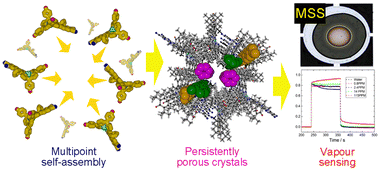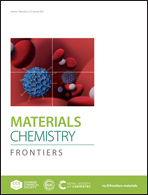Persistent microporosity of a non-planar porphyrinoid based on multiple supramolecular interactions for nanomechanical sensor applications†
Abstract
Porous substances such as metal–organic frameworks (MOFs), covalent organic frameworks (COFs) and zeolites are important materials for different applications, and several methods have been developed for their processing into device architectures. Solution processing of small molecule precursors into corresponding porous structures would be beneficial for many applications since it facilitates incorporation of the active material component into relevant devices thus reducing complexity and cost. Here we report that a non-planar saddle-shaped N-heterocycle-fused metallo-porphyrinoid forms a persistently microporous crystalline material directly from solution, which can undergo solvent exchange without loss of microporosity. The material is formed by a unique accumulation of intermolecular interactions involving π–π stacking of the fused heterocycle, coordinative interactions at the metalloporphyrinoid unit, and hydrogen bonding. This intermolecular multipoint interaction concept will be key in the future molecular design for on-demand synthesis of porous materials, and the simple implementation of the compound described here indicates the excellent potential for device materials’ synthesis. Sensing properties of the material incorporated into a nanomechanical sensor array are also reported.



 Please wait while we load your content...
Please wait while we load your content...